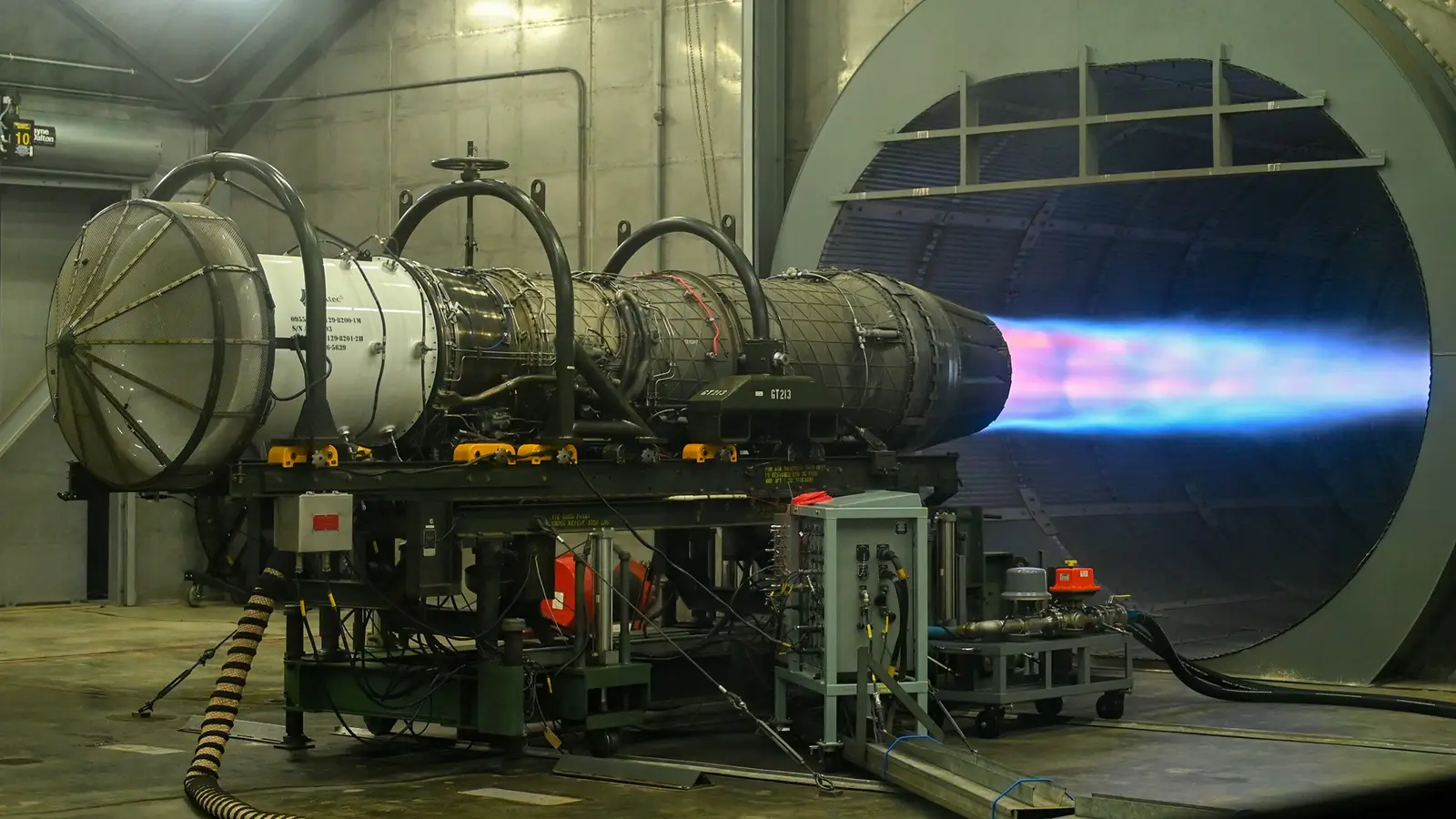Pratt & Whitney, GE & Honeywell Push Small Turbofan Engine Design Plans For New Fighter Jets

Even as the powerful Lockheed Martin F-35 Lightning II becomes a staple on the flightline of air forces around the world, and the sixth-generation Boeing fighter begins development, three of the biggest jet engine makers are working in a different direction. These high-flying, supersonic fighters make enormous thrust from their large jet engines, but the wingmen of the future will be smaller.
The US Air Force has been actively developing the Collaborative Combat Aircraft (CCA) drone that will accompany the “exquisite” manned platforms on the future battlefield. To provide an engine for that unmanned fighter drone, a much smaller turbofan will be needed.
The Loyal Wingman: Small But Mighty
Pratt & Whitney, GE & Honeywell are all moving ahead on small turbofan engine design to make the USAF’s CCA a reality in the near future. The US Navy is also developing a drone to support its own sixth-gen F/A-XX manned stealth fighter. According to Flight Global, the engine makers are reportedly targeting 800-1,600 pounds (3.5-7.1 kiloNewtons) thrust output in their design efforts.
The F-35’s engine makes 43,000 pounds of thrust for context. It is one of the most powerful engines ever made a for a fighter jet. The CCA will be a much smaller airframe, with a more limited payload, and likely only fly at subsonic speeds. The development of multiple example has been ongoing by the US Air Force, Navy, and Marines.
Just last month a new CCA prototype took flight. Secretary of the Air Force, Troy Meink, remarked after a successful test evolution of the General Atomics YFQ-42A CCA in August 2025:
“In record time, CCA went from concept to flight — proving we can deliver combat capability at speed when we clear barriers and align around the warfighter.”
Powering Generations Of Flight
The F-35 power plant is called the F135, which builds on a legacy at Pratt & Whitney that includes the jet engines of the F-22 Raptor, F-15 Eagle, and F-16 Fighting Falcon. The ongoing race for faster, higher-flying, supersonic jets has given way to stealth planes with advanced sensors and battlefield staying power. The next generation of engines in the Air Forces’s F-47 are to have a variable cycle that will modify its bypass to encompass high efficiency fuel burn, supercruise, and afterburner features.
GE Aerospace teamed up with Rolls-Royce to compete with P&W on the F-35 but ultimately lost out. They are in the race for both the CAA and F-47 powerplants and they currently make some of the most powerful commercial turbofans, the GE9X and GE90. Honeywell contributes to the F135 program with auxiliary systems and currently makes the turbines that power both the Boeing CH-47 Chinook helicopter and General Dynamics M1 Abrams main battle tank.
The Air Force Of The Future
The CCA will be different from the manned counterparts that it shares the battlefield with. Likely deployed from closer to the frontline, they will not need the same speed or range. The expendability of the CCA also means that a costly power plant is wasted because part of its role to essentially be a shield that can sacrifice itself to stop missiles aimed at manned jets.
It will be interesting to see both the winning design and the maker that emerges victorious in the competition for the contract award. P&W may be the incumbent with its track record of fighter jet engines but the competition has excellent pedigrees as well.
The quantum leap in technology will mean far greater capability but, more importantly, removing more troops from the line of fire will preserve human life in a way that no defense system has yet achieved. The air force a decade from now will be a very different fleet from what we are familiar with today.



